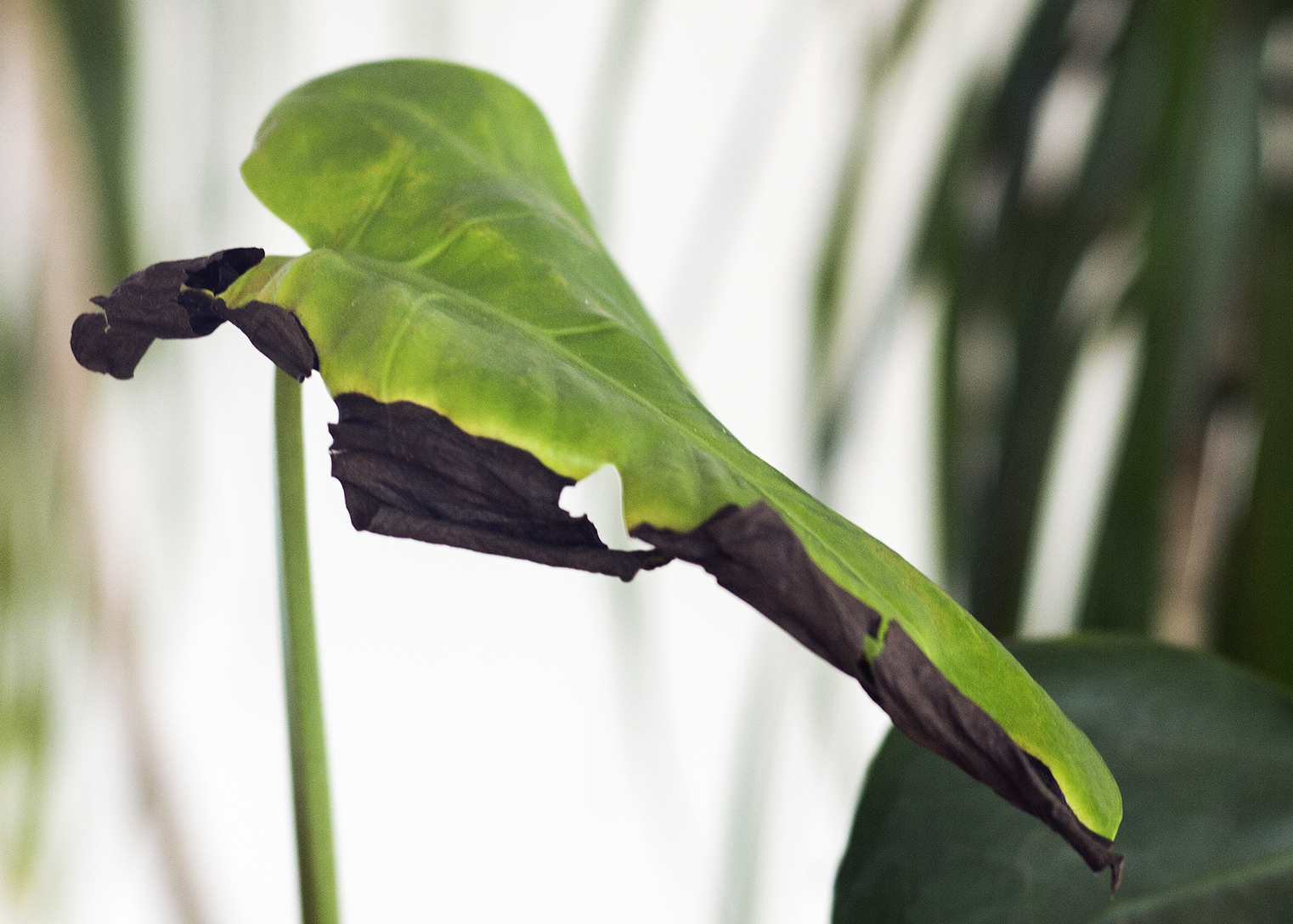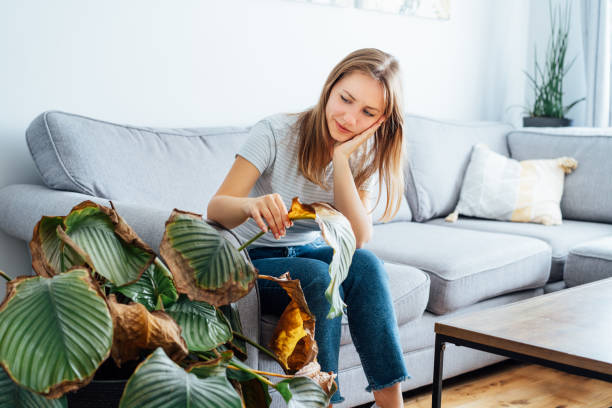Plants naturally use and lose water every day. But when water’s limited, other plant parts get served first; tip cells lose out and die from a kind of drought.
Here are a few reasons why your plants are turning brown:
:max_bytes(150000):strip_icc():format(webp)/houseplants-leaves-turning-brown-1902675-10-a243bb58b57748f4afb8cff9683fd231.jpg)
Image credit: Pexels
Overwatering
Your leaves will show signs of overwatering by turning brown or yellowish and begin to look limp or feel mushy. It is vital to provide enough time for the soil to dry between waterings. The excessive water can eventually suffocate the roots and leaves causing them to begin to rot and turn yellow or brownish.
Make sure to test the soil at least once every two weeks to avoid overwatering. You can avoid overwatering and killing your houseplants by doing the finger test. Simply place your finger a couple of inches down in the soil. If the soil feels cold or moist at all, wait another day or two before watering your plant babies.
ALSO SEE:
WHY YOU SHOULD AVOID USING ICE CUBES TO WATER YOUR HOUSEPLANTS
Sunburn
Although most plants need direct sunlight, too much of it can cause damage. Too much exposure can cause sunburn on the leaves, hence why it is best to keep it to a minimum of 5/6 hours of sunlight a day. Some plants are sensitive to direct sunlight and will burn easily.
It is important to research the type of plants you have so you can understand their needs and avoid sunburn. To avoid this from happening to your plants, you can just try moving your plant to a location where it will be out of the direct rays of the sun.

Pexels
Excessive fertilization
This mostly happens to outside plants. When the soil is over-fertilized, the plants have difficulty absorbing all they need and their levels of pH nutrients. When this happens it simply means your plants are overfed. When your plants have excessive fertilisation, you’ll be able to spot a crust of excess salt on the top of your potting soil.
Low humidity levels
This point is often overlooked but it also plays a huge part in your plant’s health. When there are low levels of humidity you will start seeing browning at the tip of your plant leaves, this is more common in the winter months.
During the winter months, mist your plants regularly to boost humidity levels. Try placing your plants on a water-filled pebble tray, but also be mindful not to overfill the water pebbles.
The best remedy to keep your plant leaves from turning brown is to be mindful of your plant’s requirements. Always monitor your plants to check for any damage.
ALSO SEE:
Feature Image: Pexels

